The Gloucester and Sharpness ship canal – at one time the broadest and deepest in the world – connects the docks on the River Severn to the city of Gloucester about 16 miles away and was built because at times navigation of the river itself was hazardous. A stretch of the canal near Sharpness runs dangerously close to the unstable bank of the river – at times barely 10m away – so measures were taken to strengthen and stabilise the bank in this area to avoid a breach that would rapidly drain the canal. From 1909 up to the 1970s disused and unwanted vessels, 81 in total, were holed and beached on the riverbank allowing them to fill up with silt. Over time the riverbank was strengthened and built up, later ships on top of ships, and the area is now known as Purton Ships’ Graveyard or Purton Hulks.
I visited in August together with some of my family members after we had taken a canal boat cruise testifying to the current use of the canal for recreation rather than for commercial transport. The riverside was quiet, we appeared to be the only explorers, and the adjacent canal had only a few stationary houseboats and occasional walkers on the towpath. I was carrying a Leica MP, Zeiss 35mm Biogon lens with a Y2 filter, Fomapan 100 film; the film was later stand developed in Rodinal 100:1 and digitally scanned (and yes, Fomapan plus Rodinal is grainy). The site is easily accessible though obviously there are potentially dangerous drops so young children (as always) need to be watched closely. When we visited the grass was long, heavy with seed, and the weather was hot so we were all wearing shorts. As we made our way along overgrown paths the grass gently but annoyingly scratched at our legs.
The featured image shows several vessels close to the entrance to the ‘graveyard’; there is also a plaque with a very brief description and a column listing the names of some of the major vessels resting here. Probably the majority of vessels now lie buried and completely invisible in the bank, occasionally one finds sign underfoot of a hint of a vessel but no substantial remains. The tide was out – it would be interesting to see at high tide too – but at least some good seats could be found. Remaining vessels are mostly ones built with concrete hulls. There are some remains of what were obviously once primarily wooden ships though sometimes little more that a rudder or part of a hull remains, and there is one small steel superstructure still largely intact.
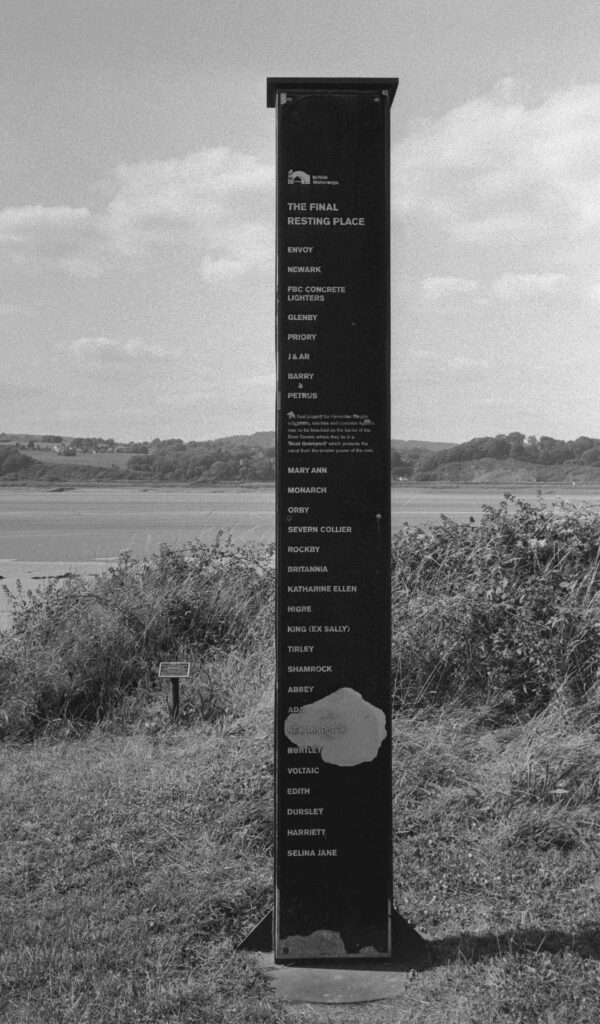
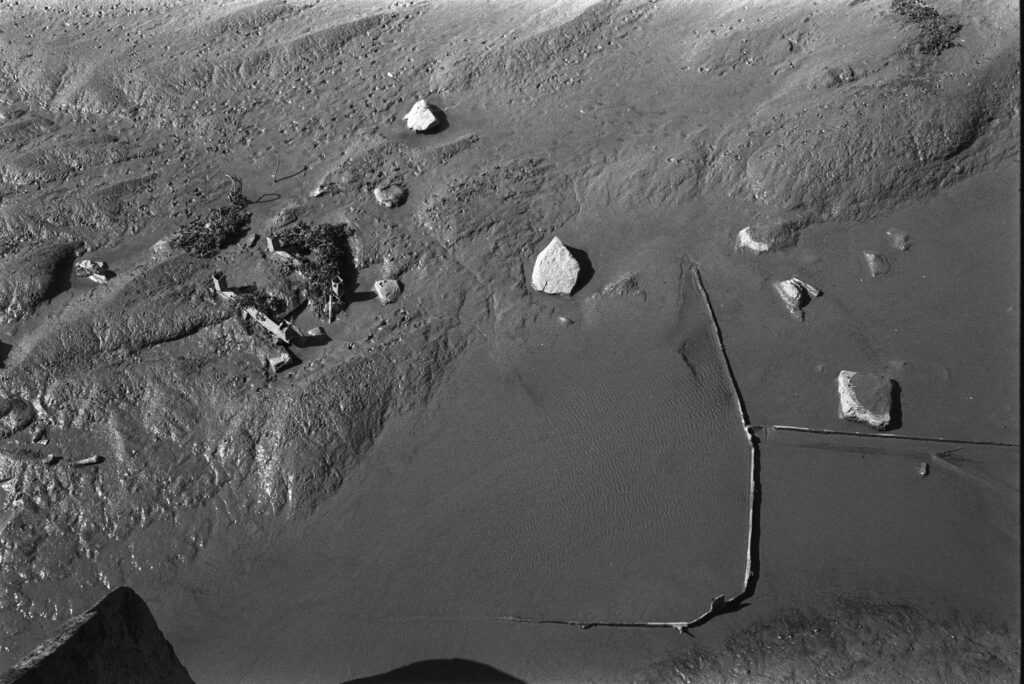
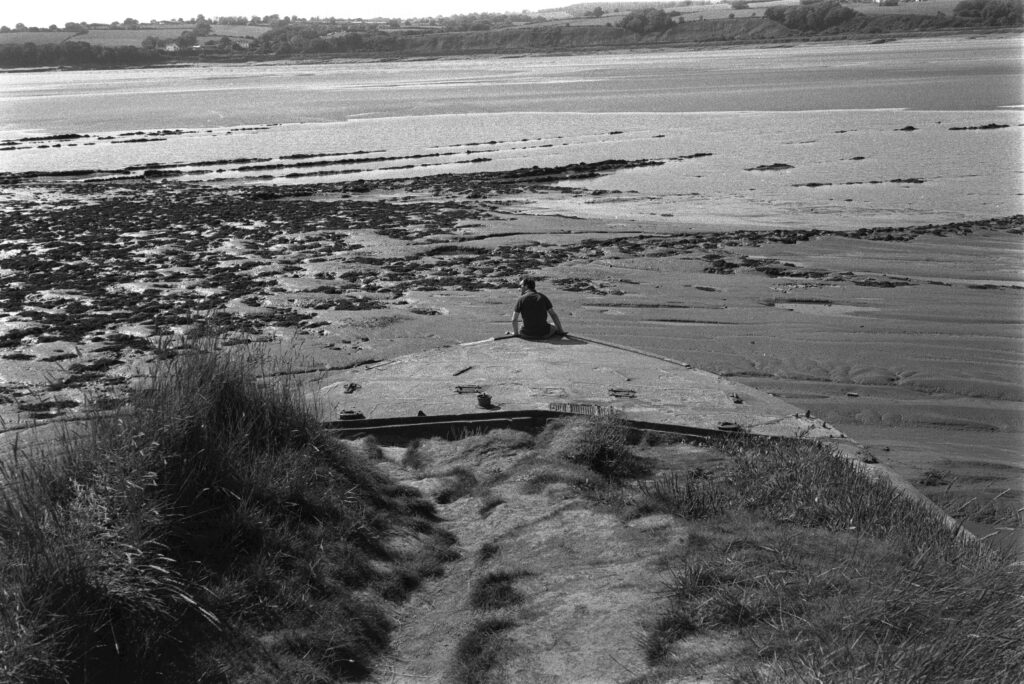
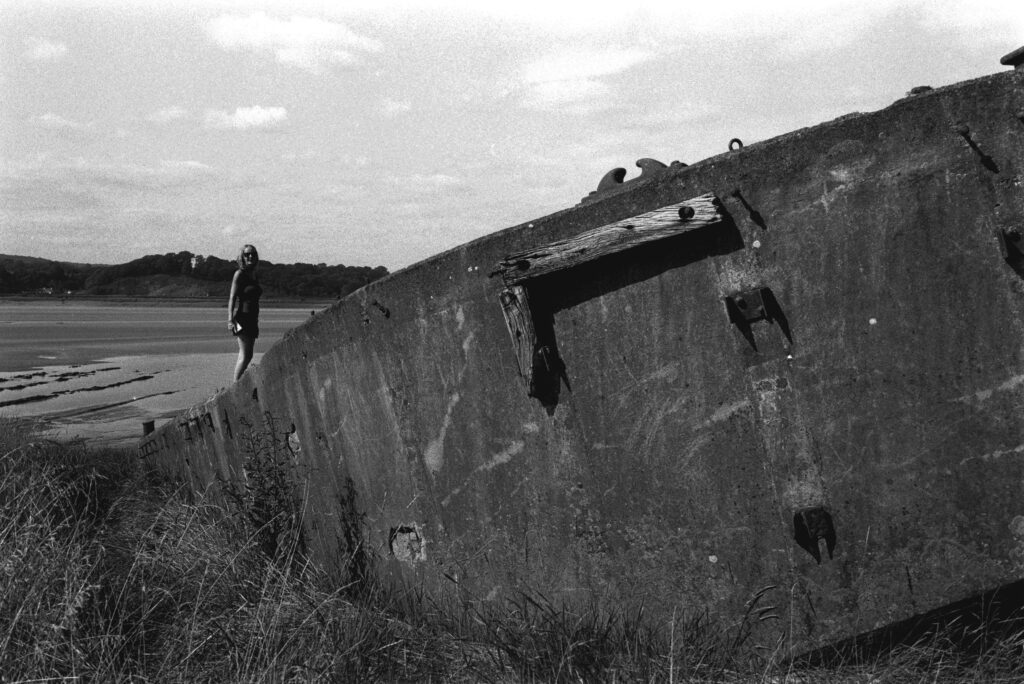
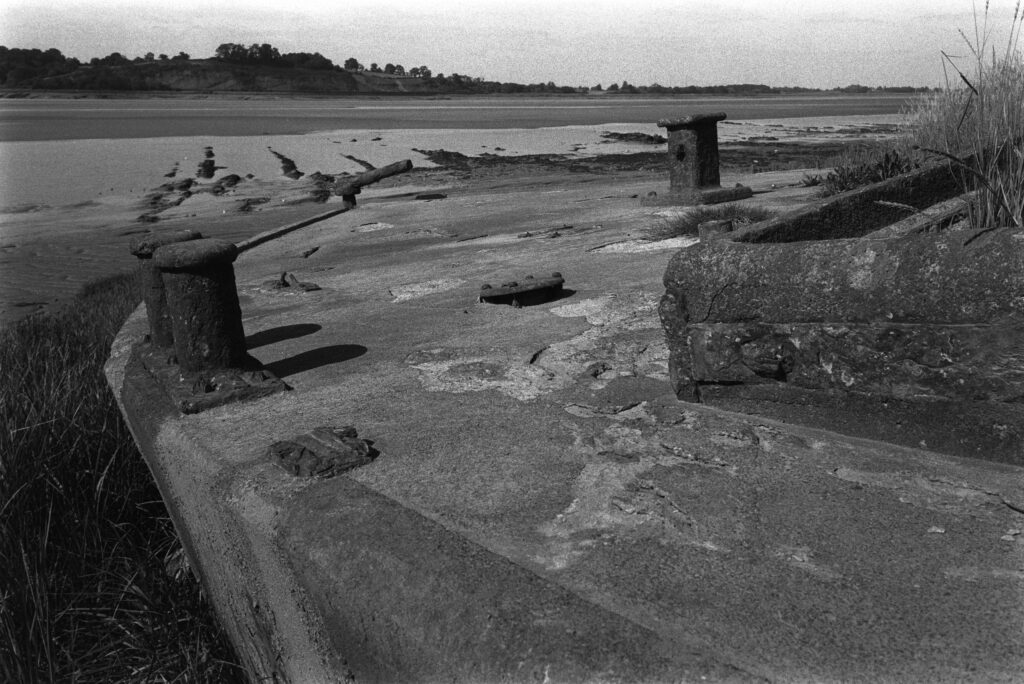
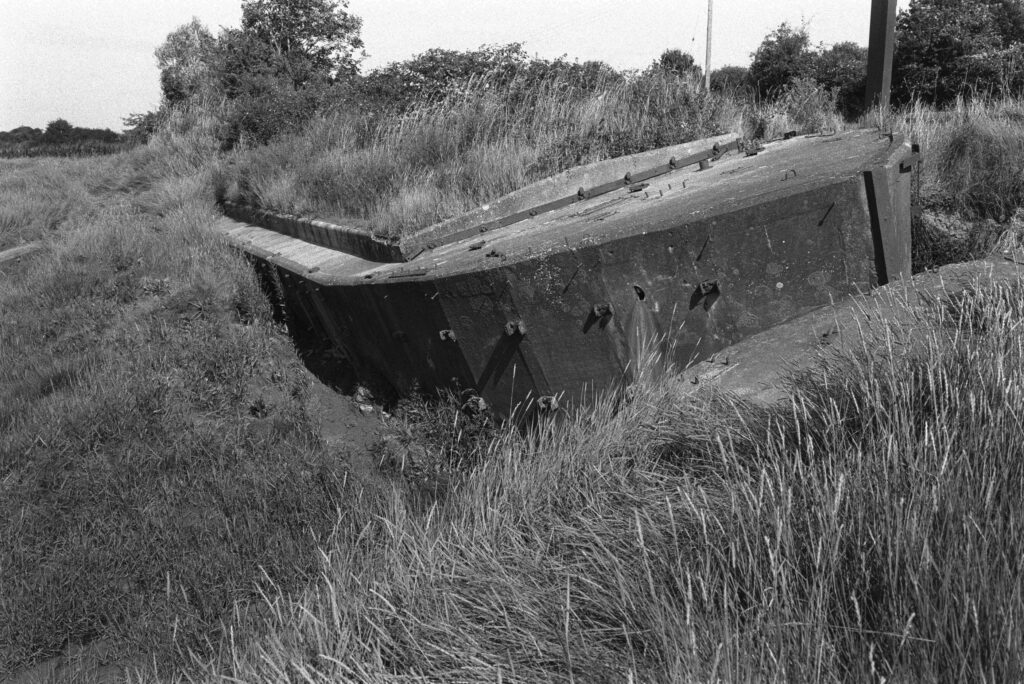
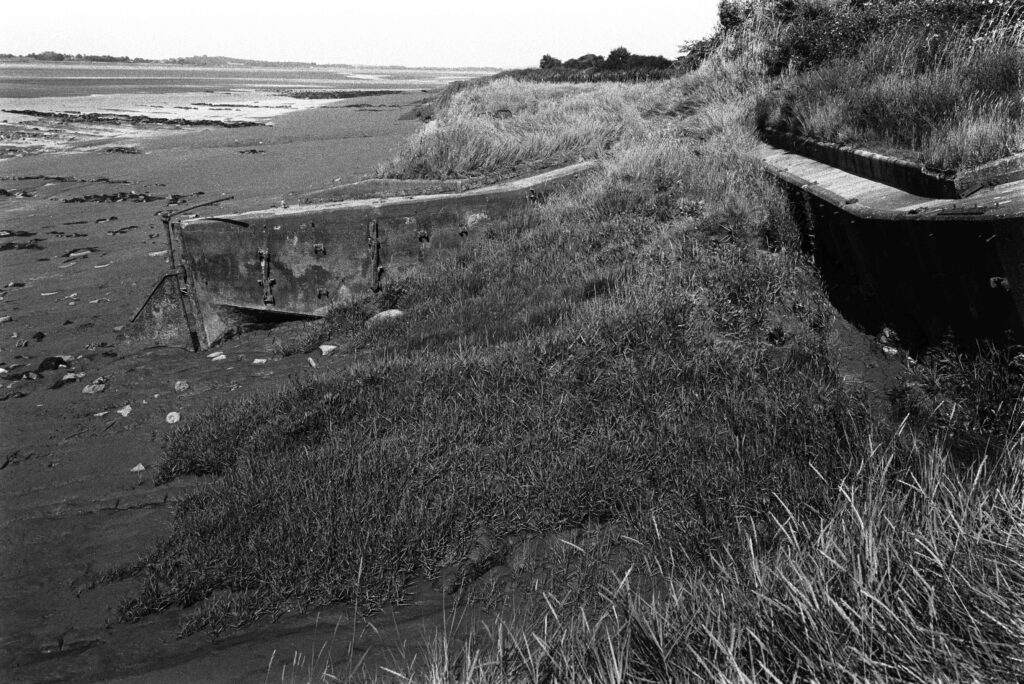
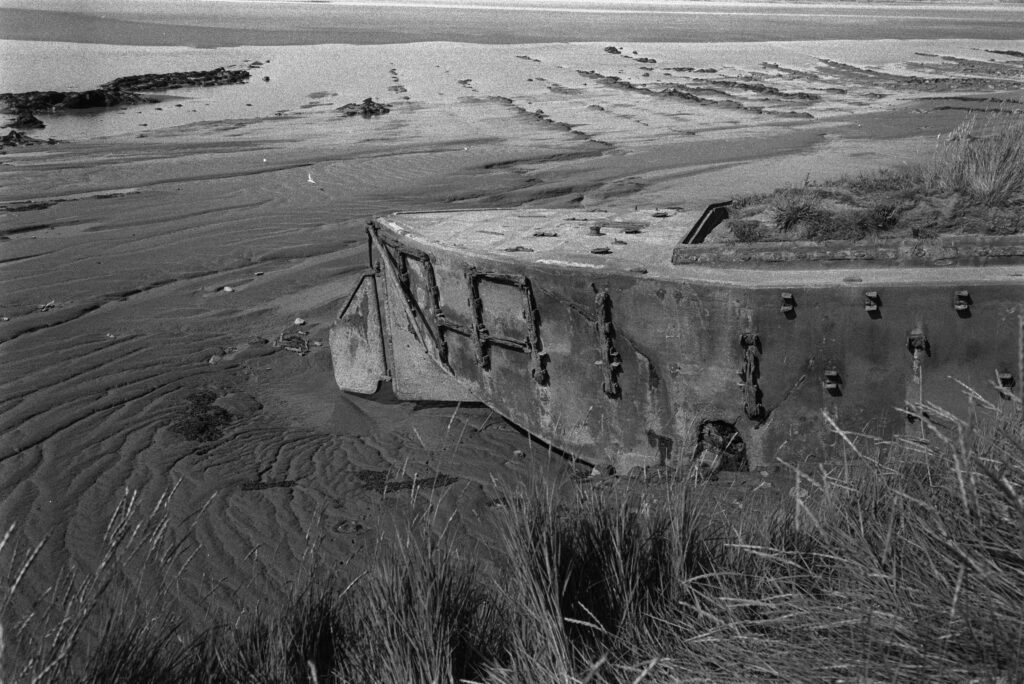
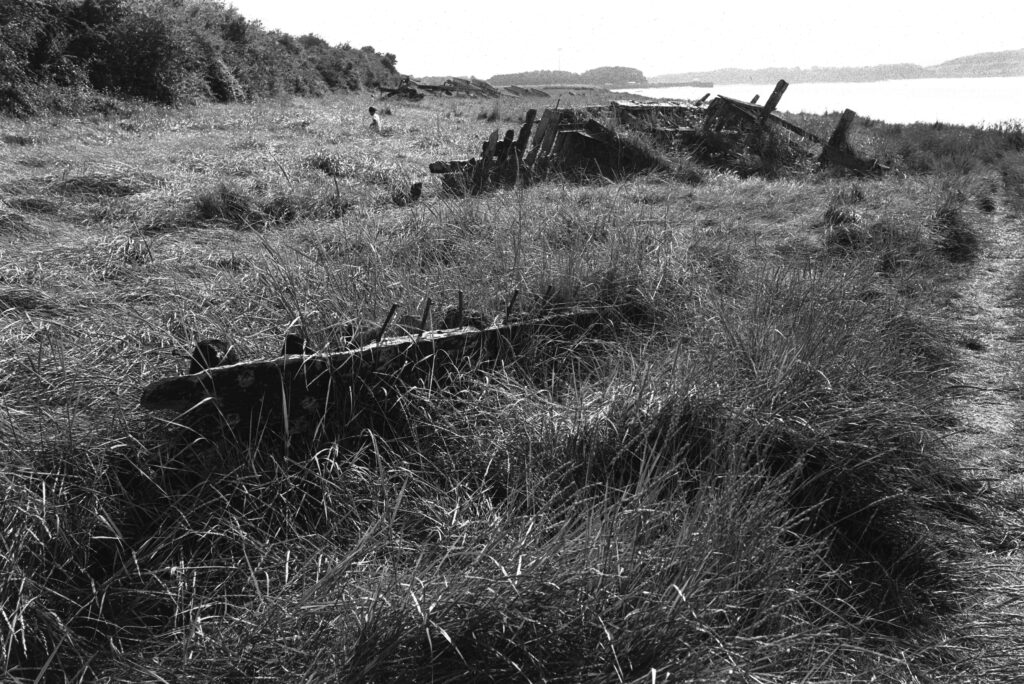
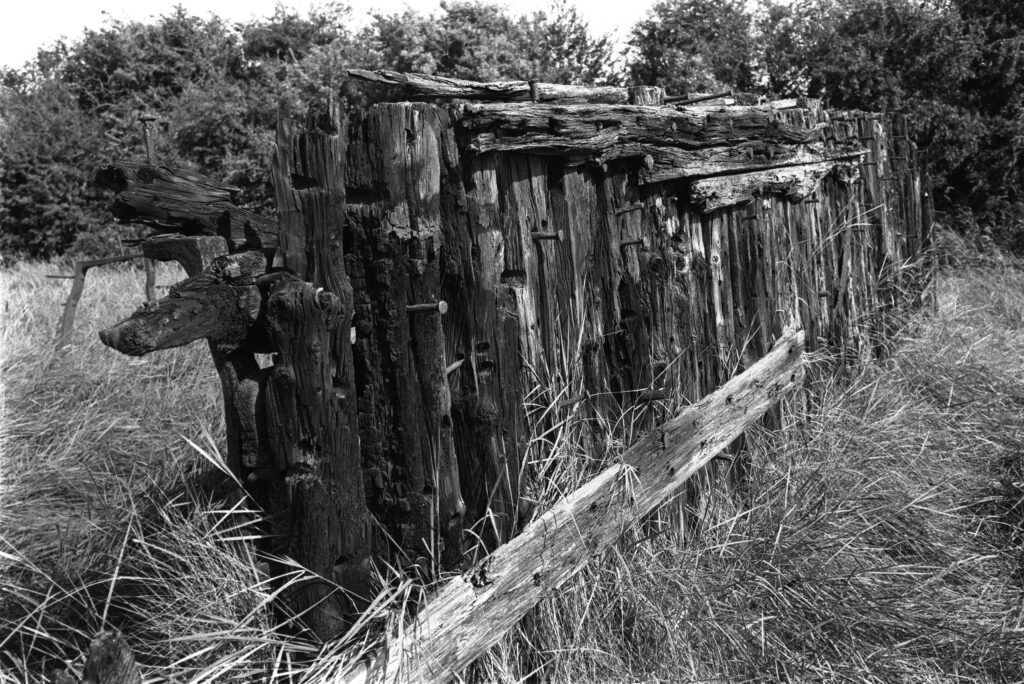
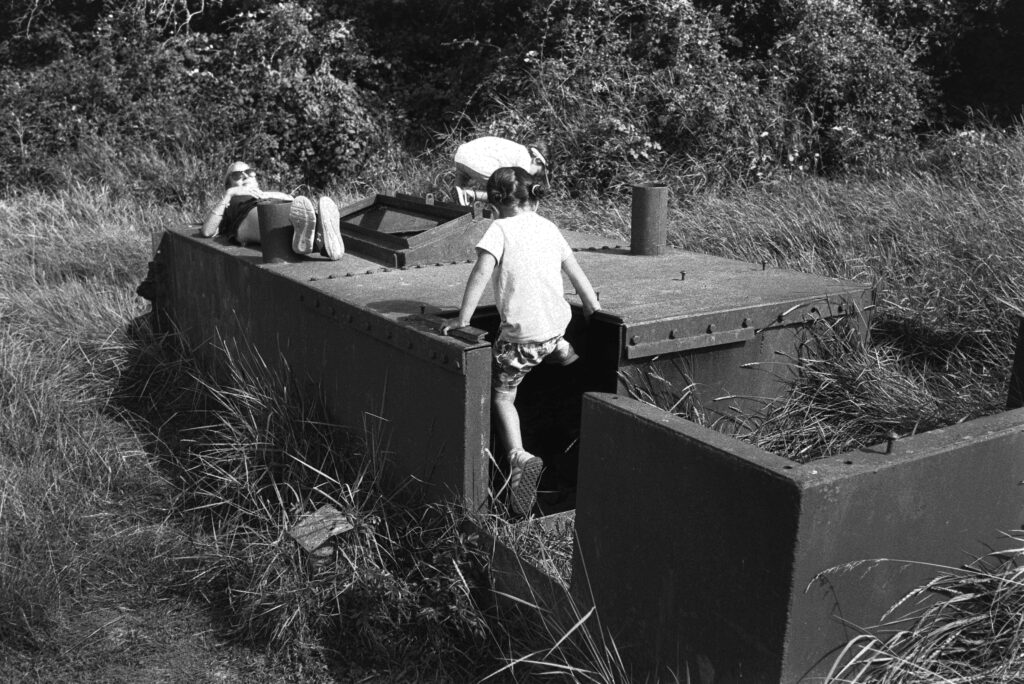
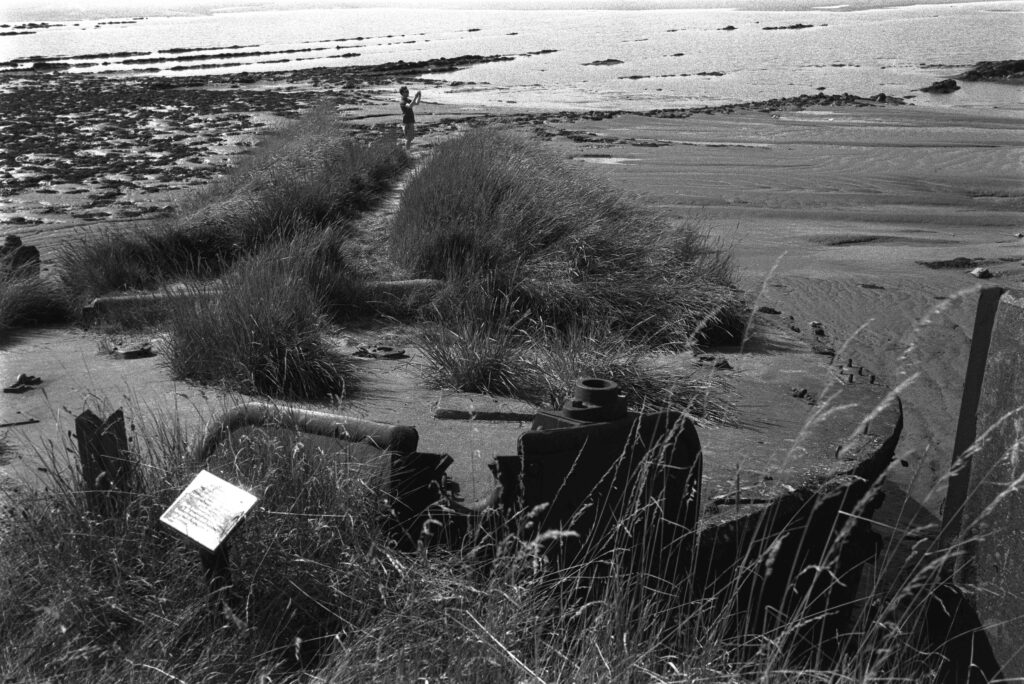
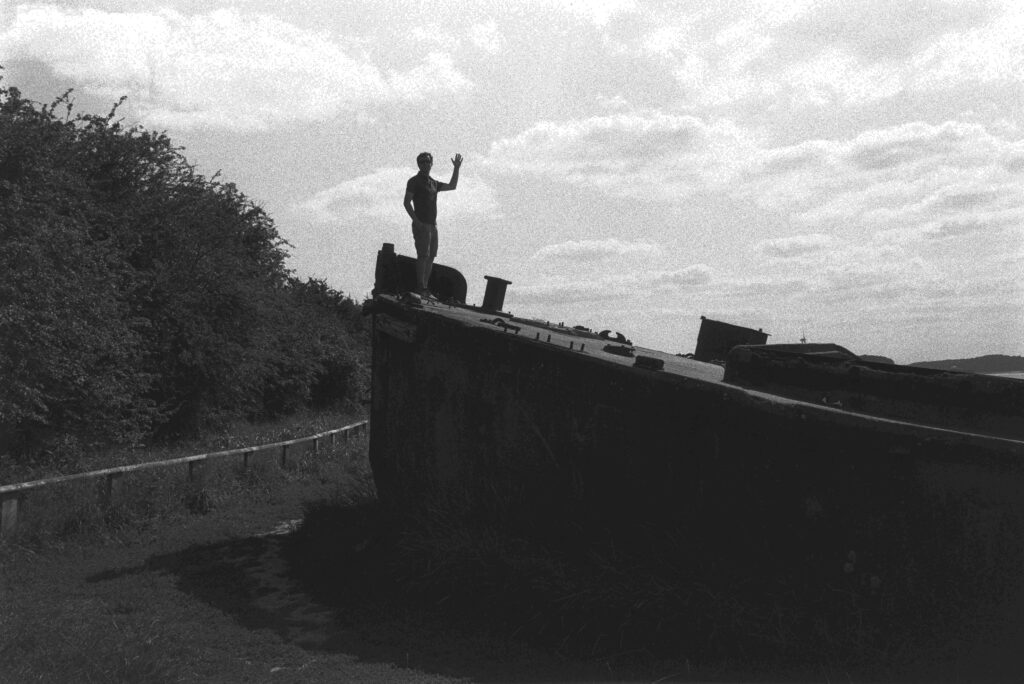
Share this post:
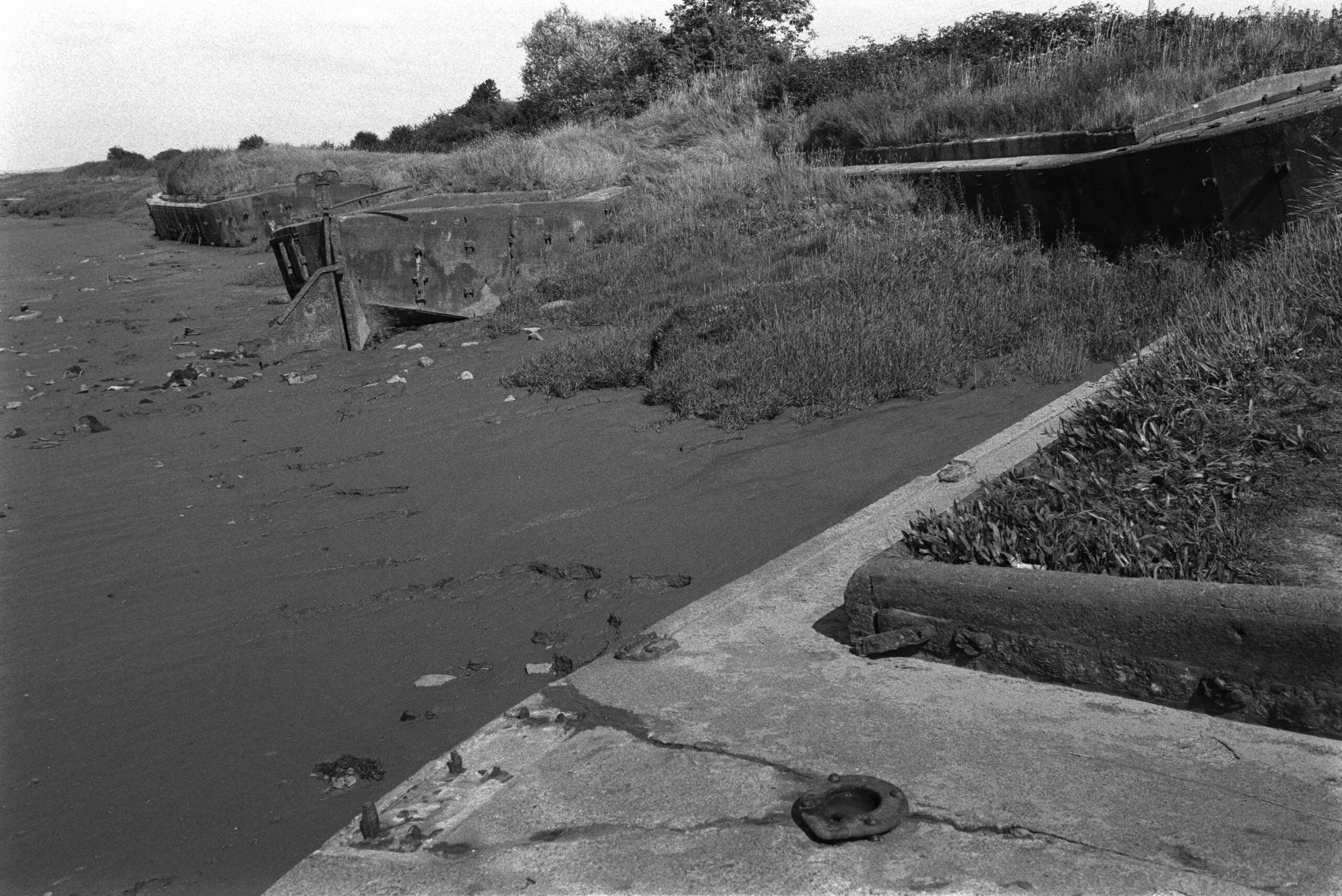

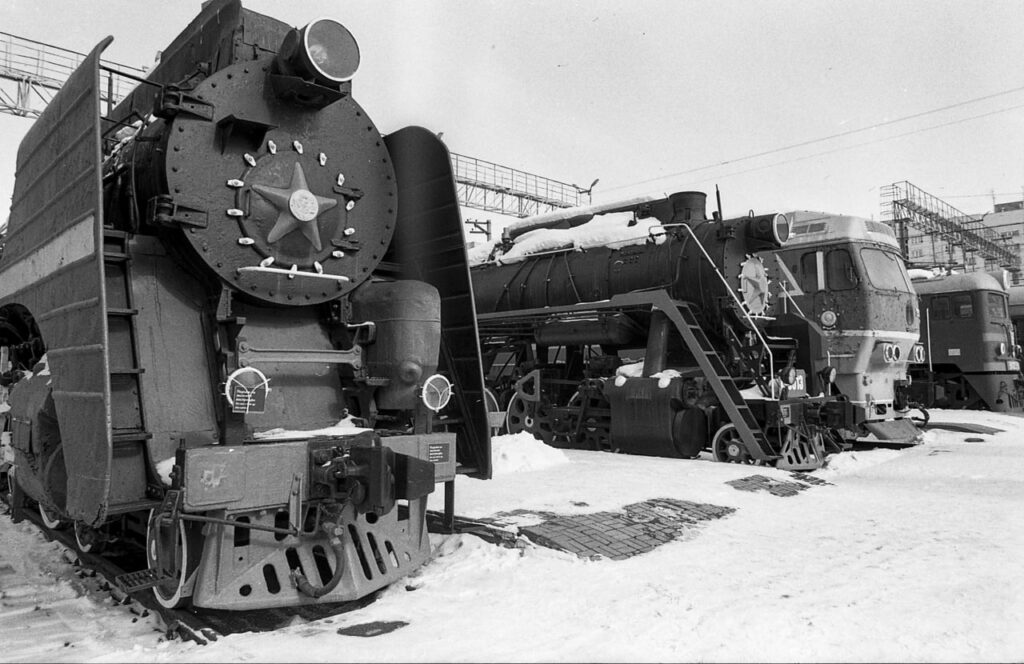
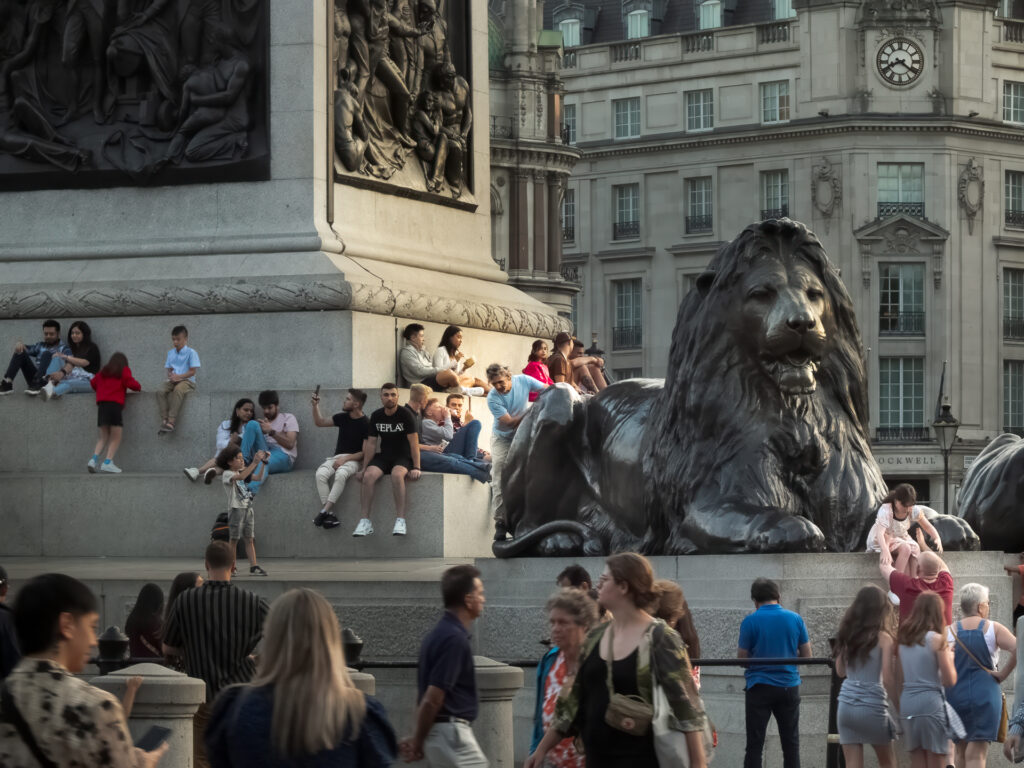
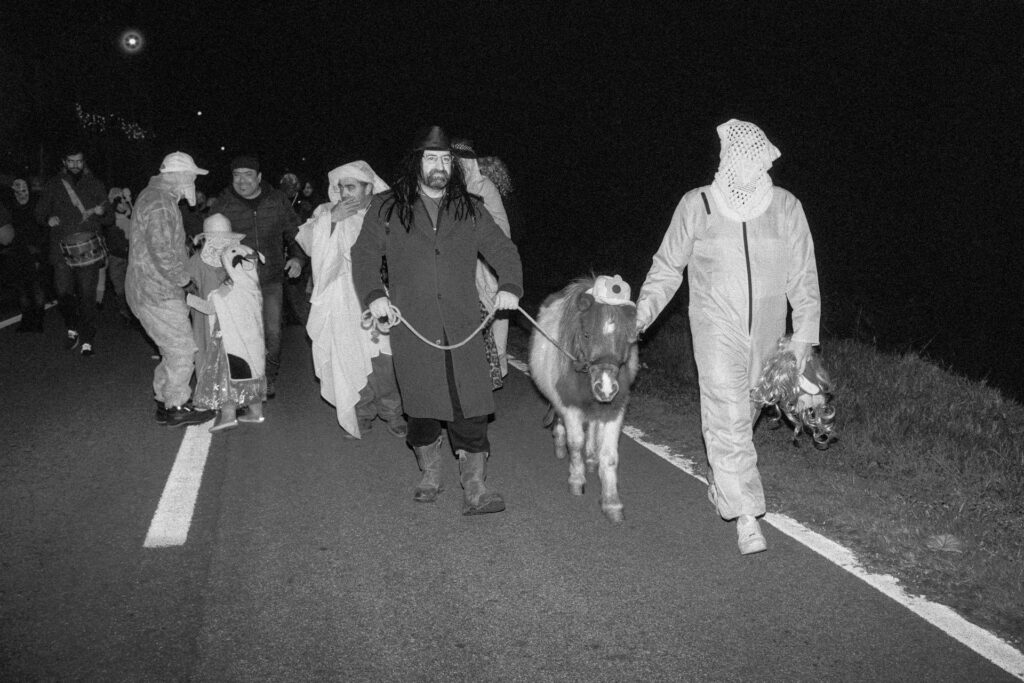




Comments
Dave Powell on The Boat Graveyard
Comment posted: 12/09/2024
There are a ton of other series on YouTube, and through Roku, we're now enjoying "Cruising the Cut" and "Mindful Narrowboat" (with Zeph the dog constantly stealing the show). The latter is especially nice for relaxing late-night viewing.
So your article and photos will be tonight's entertainment. (And I'm amazed that anyone would build a boat out of concrete... WOW.)
Thanks Geoff!
Comment posted: 12/09/2024
Comment posted: 12/09/2024
Richard on The Boat Graveyard
Comment posted: 12/09/2024
They can easily been seen on google earth and located to go out and document as you have done. Great piece. You should expand on it. Make a zine and fill out the story more with those experts who installed the boats. See if their reasoning was sound all along or evolved over time and what if any resistance was put up by others. Or even a guess as to what the shoreline would look like now if they had not been left there. How has wildlife been affected?
Comment posted: 12/09/2024
Jeffery Luhn on The Boat Graveyard
Comment posted: 12/09/2024
Comment posted: 12/09/2024
Comment posted: 12/09/2024
Comment posted: 12/09/2024
Peter Roberts on The Boat Graveyard
Comment posted: 12/09/2024
The concrete "boats" look to be the ferro-concrete barges that were built to transport supplies after the D Day landings. They were towed across the channel to the temporary Mulberry Harbours off the Normandy coast. These were also built using ferro-concrete and towed across. Remains off these still there.
Fomapan 100 and Rodinal? Yes, it can be grainy but not unpleasantly so. I usually go for 50:1 semi-stand which to my eye results in a nice punchy contrast. Each to their own.
Comment posted: 12/09/2024
Tony Warren on The Boat Graveyard
Comment posted: 12/09/2024
As a child, the canals were still a means of bulk transport (pre1950ish) and my school teacher father used to have children in his class for a day or two at times as the boats called nearby to load/unload.
I have used Foma 400 in 110 split from 120. Rated at ISO 100 and processed in Rodinal 1:50for just 7 minutes and the grain is remarkably good. This film can be rated at anything between 100 and 6400 according to the Massive Development Chart site.
Comment posted: 12/09/2024
Comment posted: 12/09/2024
Terence Long on The Boat Graveyard
Comment posted: 13/09/2024
Comment posted: 13/09/2024
Gary Smith on The Boat Graveyard
Comment posted: 14/09/2024
Comment posted: 14/09/2024
Matthew Bigwood on The Boat Graveyard
Comment posted: 18/09/2024
Comment posted: 18/09/2024